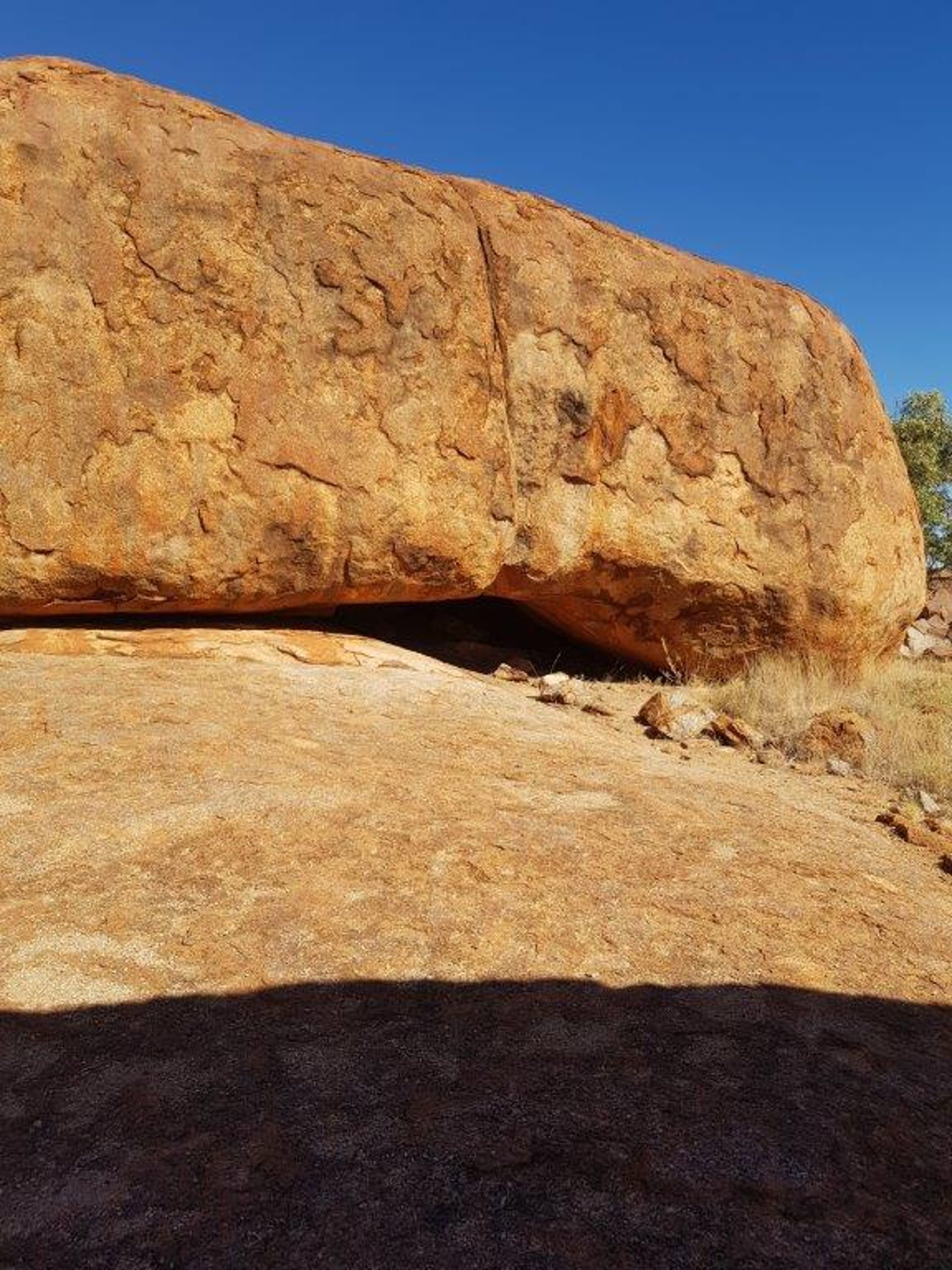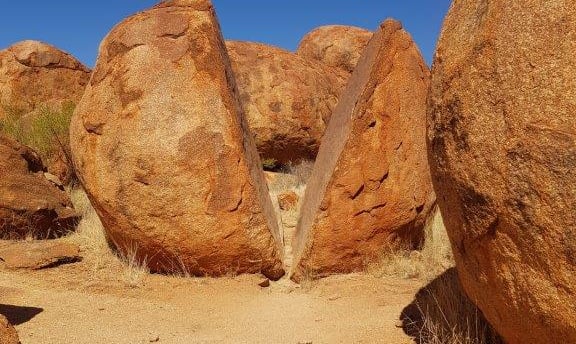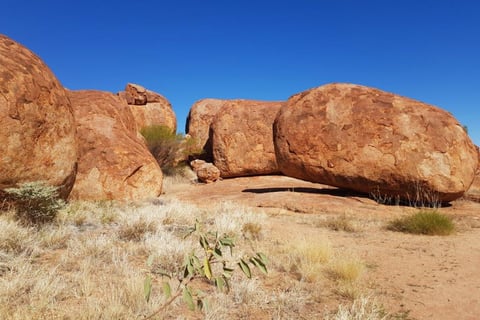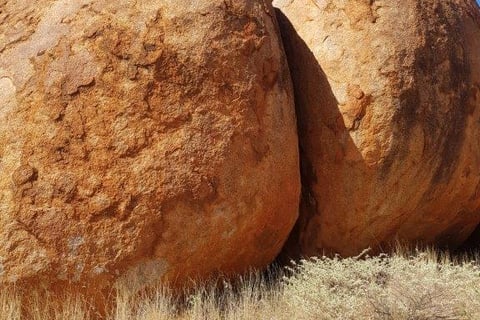
The Devil’s Marbles: A Natural Wonder of the Northern Territory
A visit to the Devil’s Marbles is an unforgettable experience.
AUSTRALIAN HISTORYNORTHERN TERRITORYPLACES TO VISIT
1/18/20254 min read


The Devil’s Marbles, also known as Karlu Karlu, is one of the most iconic and intriguing natural landmarks in the Northern Territory of Australia. These massive, spherical rock formations are located about 100 kilometers (62 miles) south of Tennant Creek, a town in the heart of the Australian Outback. The site is not only a geological wonder but also holds significant cultural importance for the local Indigenous people, the Warumungu, Kaytetye, and Warlpiri nations.
Geological Significance
The Devil's Marbles are part of a vast area of granite outcrops that dot the landscape of the Australian Outback. These smooth, rounded boulders, some of which reach up to six meters in diameter, are the result of millions of years of natural geological processes. The rocks themselves were formed approximately 1,500 million years ago when magma from deep within the Earth slowly cooled and solidified to form large granite masses. Over time, wind, water, and other environmental forces gradually eroded the surface of the rocks, exposing the core of the granite. This process is known as exfoliation.
As the weathering and erosion continued, the rocks fractured into spherical shapes. These rounded boulders are often seen balancing precariously on top of one another, creating a striking visual contrast against the surrounding flat terrain. The geological features of the Devil's Marbles are an excellent example of the forces of erosion and weathering at work, giving the area a surreal and otherworldly appearance.
The site is part of the Karlu Karlu / Devils Marbles Conservation Reserve, which was established to preserve the natural beauty and geological importance of the area. The rocks are not only an impressive spectacle but also a testament to the power and longevity of Earth’s natural processes.
Cultural Significance
For the Indigenous peoples of the Northern Territory, the Devil’s Marbles hold deep spiritual and cultural significance. According to local Aboriginal stories, the marbles are the eggs of the Rainbow Serpent, a creation being in Aboriginal mythology. The Rainbow Serpent is said to have shaped the landscape and created the features of the land. In this belief system, the rocks are considered sacred and are associated with ancestral spirits and dreaming tracks.
Different groups of Indigenous peoples have their own interpretations and stories surrounding the Devil’s Marbles. For instance, the Warumungu people believe that the boulders are the petrified remains of an ancient battle, while others see them as the remnants of a great ceremonial dance. The site continues to be a place of significance for Indigenous Australians, and visitors are encouraged to approach the area with respect for its cultural importance.
A Popular Tourist Attraction
The Devil’s Marbles is a popular destination for tourists traveling through the Northern Territory, especially along the Stuart Highway, which connects Adelaide to Darwin. The site offers a striking contrast to the vast, arid expanses of the Australian Outback. The best time to visit is during the early morning or late afternoon, when the light creates dramatic shadows and enhances the beauty of the formations. At sunrise and sunset, the boulders glow with an orange hue, creating an ethereal and magical atmosphere.
The site is accessible to visitors with well-maintained walking trails that provide an opportunity to explore the area up close. Along these paths, visitors can get a better sense of the scale and formation of the rocks, as well as their placement in the landscape. There are also interpretive signs that provide information on the geology and cultural significance of the area. The Reserve offers picnic areas, rest spots, and basic facilities, making it a pleasant stop for travelers exploring the region.
Given its proximity to Tennant Creek, which serves as a hub for services and amenities, the Devil’s Marbles is a must-see landmark for those exploring the Australian Outback. Additionally, nearby attractions such as the Alice Springs Desert Park, The East MacDonnell Ranges, and Mataranka Hot Springs further enrich the travel experience in the Northern Territory.
Environmental Conservation
The protection and conservation of the Devil’s Marbles are crucial to preserving both its natural beauty and cultural heritage. The Northern Territory Government works alongside Indigenous groups and conservationists to safeguard the area and ensure that it remains a place of wonder for future generations.
The management plan for the Karlu Karlu Conservation Reserve focuses on preserving the natural environment, protecting the local flora and fauna, and maintaining the site's cultural integrity. The boulders and surrounding landscape provide a habitat for native plants and animals, some of which are rare or endangered. One such example is the spinifex pigeon, which is found in the region. Conservation efforts also aim to protect the site from the effects of overuse, environmental degradation, and vandalism.
Visiting the Devil’s Marbles
A visit to the Devil’s Marbles is an unforgettable experience. The stark beauty of the boulders, combined with their rich cultural and geological significance, makes it an essential stop for anyone traveling through the Northern Territory. Visitors are encouraged to respect the site and adhere to guidelines designed to protect its natural and cultural values. The preservation of the Devil’s Marbles ensures that this remarkable natural wonder will continue to inspire and awe future generations.
In conclusion, the Devil’s Marbles is a geological masterpiece, shaped by millions of years of natural forces, and a deeply meaningful site for the Indigenous peoples of the Northern Territory. Whether admired for its natural beauty, its cultural significance, or its geological history, the Devil’s Marbles stands as a testament to the power of nature and the deep spiritual connection that the land holds for its traditional custodians.




